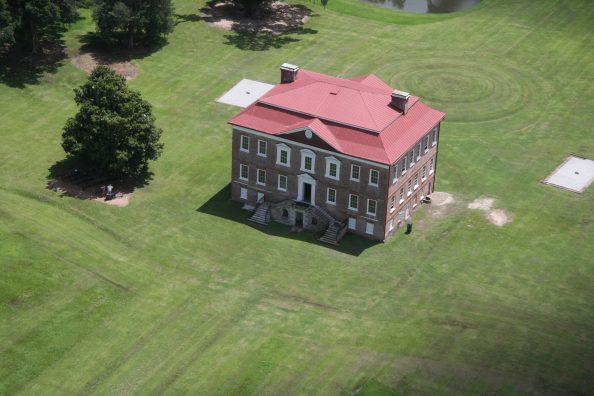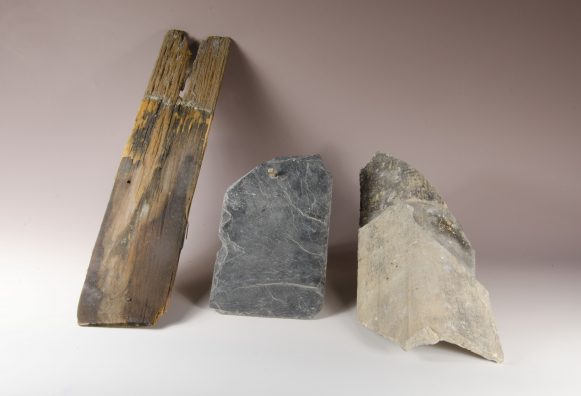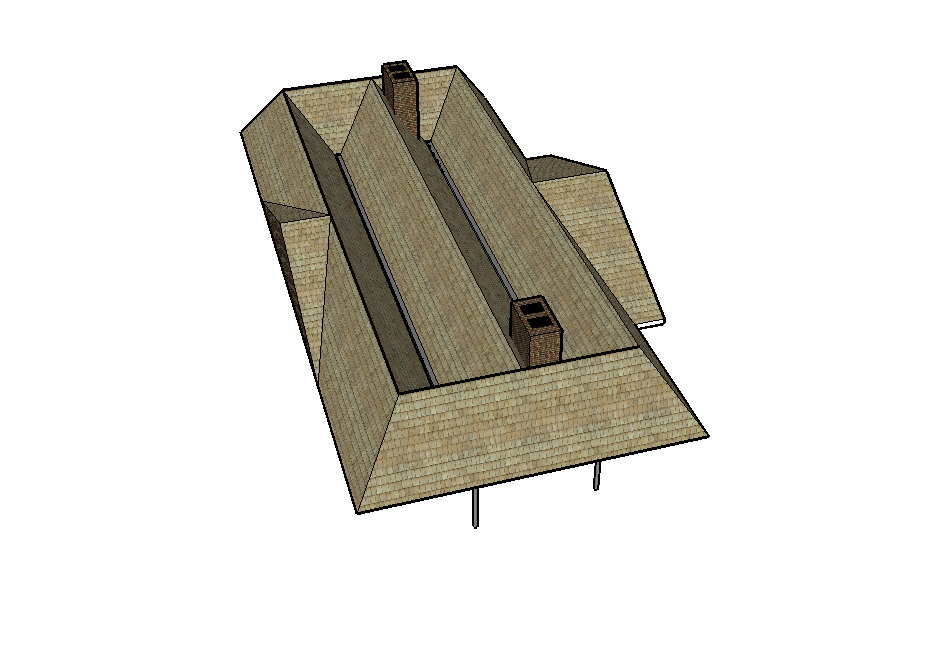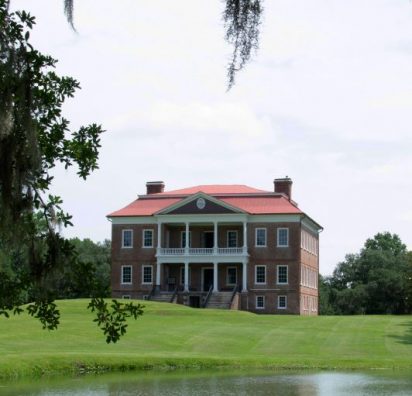Voted the Best Place to See by Condé Nast Traveler.

The roof of Drayton Hall: One of the most iconic and recognizable roofs in all of the United States has been a thing of great struggle. Because of centuries of challenges with roofs on Drayton Hall, the survival of the house is even more impressive than its war time survival. Certainly, the ambitious architecture demanded an impressive roof line, unlike any other. But that decision resulted in a great deal of ruinous scenarios for the house. And it is that decision, architecturally, which accounts for most of the stories we tell about the structure of the house as we see it today.

The modern roof of Drayton Hall, Charleston, SC. Photo by Tulsa Ariel Photography
Nothing about the journey to what you see here – the house’s roof of today (above) – was easy. In 1752, when the house was completed, the cypress shingle roof was a treble, or “W” shaped roof.

Architectural fragments of Drayton Hall’s various roofs. Recovered archaeologically. Courtesy Drayton Hall Archaeological Collection. From left to right: Cypress shingle (original roof), slate and pan tile (second generation roof).

Recreation of the original cypress shingle roof of Drayton Hall. Courtesy Drayton Hall Preservation Trust.
This was likely visually stunning, novel, and impressive but not at all healthy for the house. In the torrential and unforgiving rains of the Lowcountry, this design drove water through the house *for 120 years.* In 1801, Charles Drayton, second generation owner of Drayton Hall kept the W shape but replaced the cypress shingle with slate and pan tile (middle and left of image 1 above). Maybe he wanted to stay true to his Father’s design for the house, but we know he was deep in the fight with the water intrusion at the same time from his diary entries. Regardless of all the water, the Drayton’s pressed on with that novel but tormenting situation – keeping that W roof in place through the Civil War and until about 1870 – when a local newspaper notes the “new metal roof at Drayton Hall.”

Drayton Hall’s roof today.
The roof profile is now twice the height it likely was originally but (image 1) the water moves down and off the sides and it continues to be metal today. As you tour the Great Hall on the second floor now, you’ll note a modest bead board ceiling installed in the same generation as the metal roof – where twice before beautiful plaster ceilings once hung, the water has left you a lasting reminder of its long and checkered history with Drayton Hall.